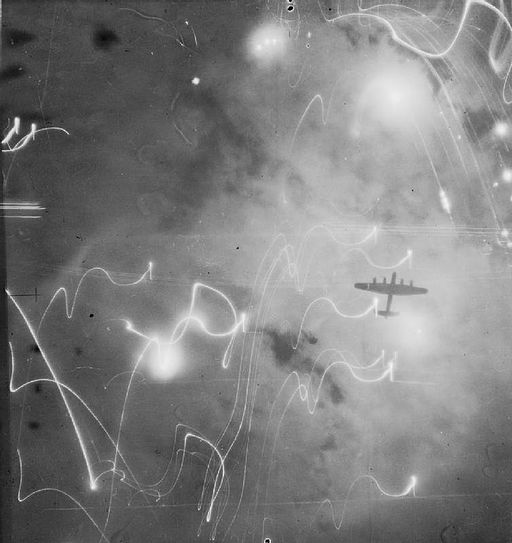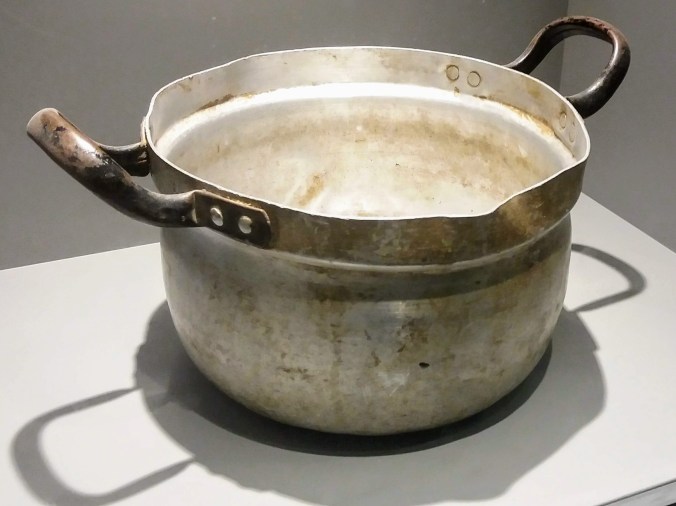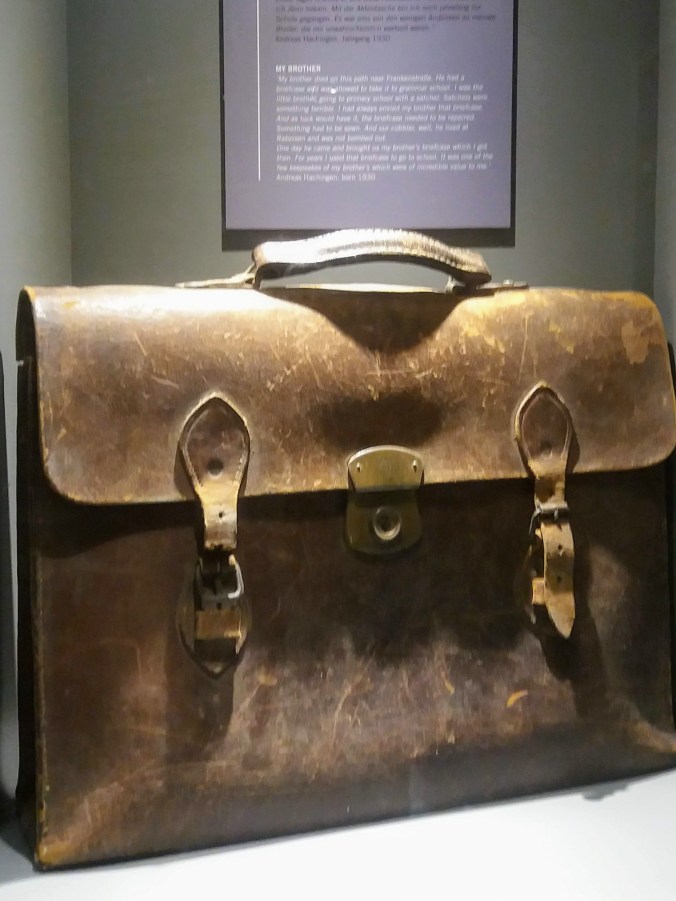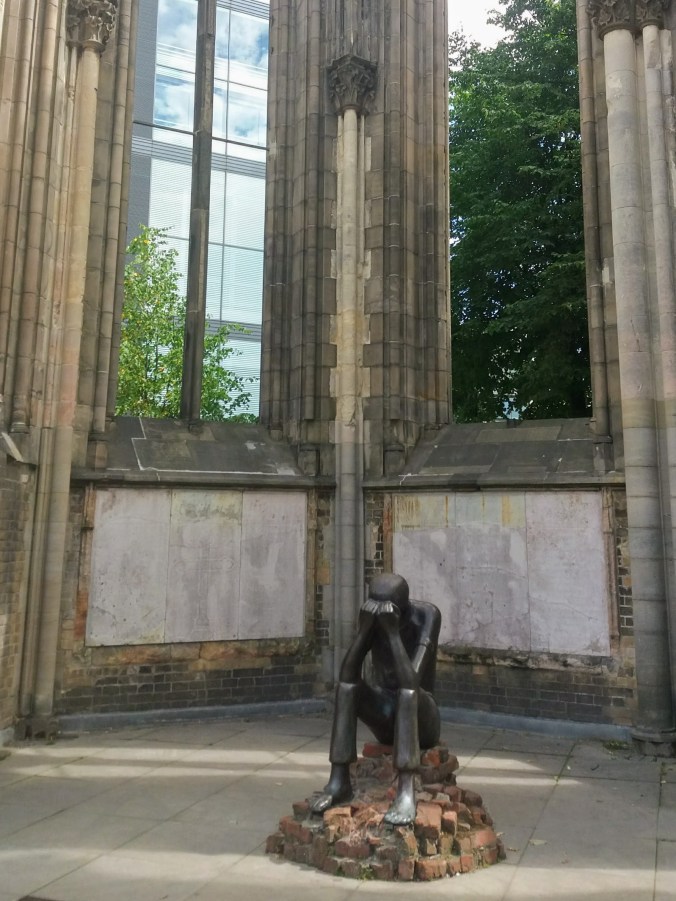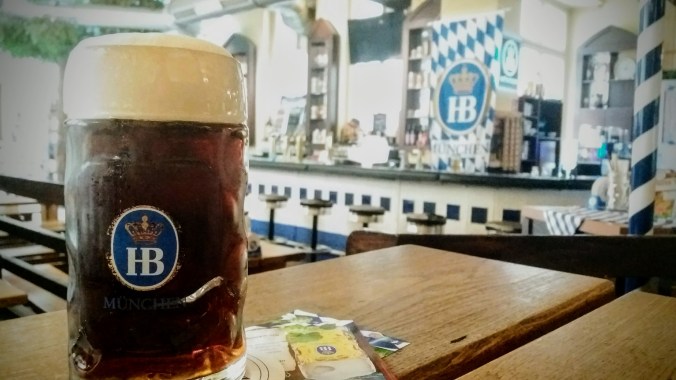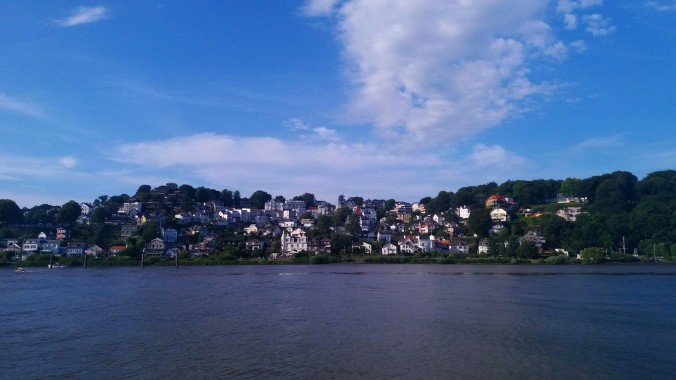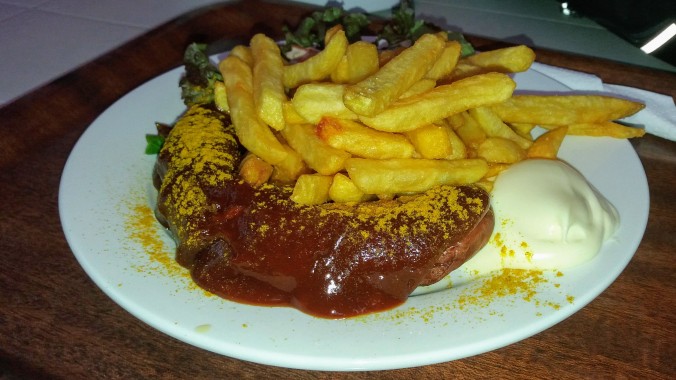I am not a “normal, healthy person”. I have been diagnosed with a wide variety of “low grade” / “high functioning” disabilities. One was actually considered severe enough to get me financial aid and accommodation for my BA studies, but only accommodation by the time I got to MA because the state of Washington didn’t have enough money to give to priority 2 disabilities. Priority 2 or “high functioning” are considered to be people who are strongly impacted by a disability, but still able to care for themselves without outside help like an in-home nurse or expensive medical equipment, and mostly still able to participate in socially economically valued work with only moderate limitations or accommodations. They’re often also called “invisible disabilities” because … “You don’t look sick!”.
I don’t feel the need to list my diagnoses, or defend my illness. That’s between me and my doctor. If you want to learn more about invisible disabilities and how you can be a better friend/boss/family member to people who have them, please read more on the youdontlooksick website. This post is about what it’s like for me personally to travel abroad with an invisible illness and how I deal with it physically and emotionally.
The Background:
Just living my life I try to spend at least one day a week doing nothing, or as close to nothing as possible. I might do laundry or take a shower, or wash some dishes. And somewhere, there’s a “more disabled” quotes because I hate comparing disability or trauma because wtf that shit is relative not absolute, person who is like wow laundry! Laundry isn’t nothing; that’s like 4 spoons, are you kidding??

*Follow this link to read about Spoon Theory in relation to Invisible Disability
If I go more than two weeks without this rest day I get pretty messed up. Again if you can’t imagine, think of how you feel if you miss two nights of sleep in a row. You can still go to work, but it sucks a lot and everything is harder.
Think of my body like a very fuel inefficient car. I get 12-15 miles to the gallon. Average is 25-30, and very fit people are like Priuses… in a lot of ways. You can’t turn a lemon into a Prius with diet and exercise. Even when I’m putting a lot of time and energy into my body, it isn’t going to do much better than about 20-25. So if I spend a lot of time, money, and effort I might be able to reach the low end of average? And then have no time money or energy to do anything else… yeah, I’ve tried it before, special diet, measuring all the food, exercising every day, and it helped me get in better shape, I could do more exercise, I could hike a bit better, I thought “wow this is so much improvement for me” until I went on a short hike with some very physically average people (not athletic types) and was left in the dust…
People say “you can do it if you’re determined enough”, but when you have a disability that limits your metaphorical mpg or spoons, it can take more energy to get to the healthy food and exercise than you get back by doing it. It stops being worth it. If you’re tempted to say “but…” or offer some advice, please, please, go look at the You Don’t Look Sick website first.

In nearly every vacation/travel in my life before the summer of 2018, the trips were so short that even if I pushed myself to the limit of my ability, I could rest when I got home. This summer, I was on the road for 7 weeks and I learned the hard way that is too long of a time for me to “push through”.
The Buildup:
Paris:
Unable to keep up with my friend and her family, I wonder if there’s something wrong with me. I often struggle to keep up and I tend to think it’s because the people I meet on travels are a bit younger and more athletic, but I’m finding I really need more rest stops than the average bear my age and older.
It wasn’t until I was seated at dinner and realized I was struggling to mentally focus on what the kids were saying that I realized how tired I actually was. I don’t know how much is jet lag, how much is the weather, and how much is just my ever decreasing number of spoons.
I think once I’m free to sit and pause for rest and refreshment at my own pace it will be better? I don’t mean to complain (except about the heat) I’m having fun. I’m just worried about spoons.
Belgium:
(after returning from Sunday in Ghent) My feet reached a point of pain that is found only in uncensored fairy tales. I remember in the original little mermaid she felt like every step was walking on knives. Ursula had nothing on this OG witch. We’re talking Bruce Willis at the end of Die Hard levels of foot pain. I honestly expected blood when I took off my socks.

I have a known medical issue in the left one and usually wear a compression bandage when I’ll be walking a lot. I think the right foot was forming a blister under a callous.
My back was almost entirely unwilling to bend. I really puff up and stiffen in the heat, and the more I stand and walk the worse it gets. I’m not trying to be a whiny baby, I went anyway. But it’s not a thing I can push through forever.
I ditched all my Monday plans. You can’t enjoy things if you’re too tired or in to much pain. Instead I woke up around 8 and made myself a Brie sandwich for breakfast and ate the rest of the chocolate (I’m in Belgium, for heaven’s sake) then passed out again until after noon.
Tuesday in Brussels: The high temperature today was only 16C. It was such a relief. I am in denial about how badly the heat affects me. But every time it cools off, I have so much more energy. This is not to say I was filled with energy today, but I went from feeling like the walking dead to merely slightly sore.
I’m having an early evening, more rest maybe another hot bath later on. I feel like such a broken human that I can’t keep going without so much rest. I don’t know why. I know I need to rest when I’m at home. I usually have at least one “do nothing day” a week to keep myself going. Yeah, that’s life with my invisible disability. It’s so hard to do that on holiday, though, I feel like I’m missing out or not talking full advantage and I just have to keep thinking of that night in Thailand when I hit the wall so hard I crashed. I am not giving up on adventure life just because I don’t have perfect health, I’m going to keep living to my fullest, even if that isn’t someone else’s fullest or even younger me’s fullest. I’m going to do self care and be ok with resting and watching cartoons on vacation so that I can really enjoy when I do go out to do things.
The Netherlands:
(Airbnb in Lanaken, Belgium. Nearest “city” Maastricht, Netherlands.)
It turns out misophonia sound triggers are a real thing for me. I had them in Saudi but was so emotionally wrecked there from other problems that they weren’t a huge change from my daily state of mind.

It happened to me in Korea this year where a produce truck came and parked near my house and just left his loudspeaker going. I went from annoyed to panicking, my heart rate soared and I couldn’t think. I tried closing all the windows but the sound was too loud. It isn’t just volume, I listen to rock and roll super loud and love it. It’s about not being able to escape. The sound is an invading force, it’s attacking me and the flight/fight/freeze response in my Amygdala is triggered. This one is especially “fun” because it could be related to any one of my diagnoses, since it can be a symptom of several, but I’m not really interested in fighting through more doctors to find out since every visit to a doctor is a fight to be believed and treated. The cost/benefit of seeking help is a thing we have to consider very carefully when we have limited energy to invest.
Anyway, here I am in my Airbnb making coffee and reading Facebook, and the church bells start. Normally, church bells ding for the hour and then stop, but this day they don’t stop and suddenly I feel it starting. I jam my fingers in my ears and start humming to try and drown out the sound and every time I check it’s still going. Not even a tune, just ding ding ding ding ding ding ding ding ding ding ding ding ding ding ding ding ding ding ding ding ding ding ding…
Then I’m just standing in the kitchen fingers in my ears trying to do parasympathetic breathing to bring my amygdala under control and I realize that I’m in terrible fear of becoming too broken to function.
The Breakthrough!
This is why the obstacles are hitting me so hard emotionally, of course heat and culture shock are contributing factors but this has been so much harder than previous challenges emotionally and I couldn’t figure it out.
It has been like peeling an onion to get inside this thing. Yes it’s too hot, yes there’s culture shock, and the nature of the obstacles themselves, the bathroom is too far away from the bedroom, the transit is unreasonably difficult, and the conservative old white colonialism-is-great attitude in the Netherlands was seriously harshing my groove especially compared with the vibrant multiculturalism of Paris and Brussels. And finally today I got to what I really hope is the gooey center of this Gobstopper of ick, the fear of being too broken to function, fed by all the above issues.
But this is it. I’m afraid there will come a point when I can’t manage. When my dream, which I just got a hold of these past few years, will slip away as my body and mind betray me and I sink back into a life of mere survival. I did that for so long: find the only job that you can manage with your existing disabilities, lie about them so you don’t get fired, spend 90% of your free time resting and hope your friends and family don’t give up on you.

The Resolution
“What can I control” is one of my lessons from Saudi. Life is full of crap you can’t control, expat life maybe more so. KSA life? Woah. The point is to survive in that kind of mess you need to focus on the things you can control to maintain balance against the things you can’t.
In my case, that means a lot more “me time”. I was worried going into this summer that I wouldn’t get that. Even slow days involve a lot of variables and people I can’t control. I’m staying in other people’s homes. Even with a private room, there are elements I can’t control.

Everyone understands how much it sucks to get sick on holiday, to feel like you lose precious vacation hours to illness but also most people think you should just push through if you can. I find I don’t enjoy things as much if I’m feeling like crap. I do what I can to prevent getting to the point I can’t do things, and sometimes that means spending hours resting when I don’t feel sick yet.
I’d love to be normal bodied. I’d love to be able to just go and do. I’m not saying disabled people don’t have worth or can’t enjoy life, but I don’t know anyone who wouldn’t rather have full functionality. It doesn’t benefit me to spend so much of my life resting except that it allows me to live the other parts more enjoyably.
I remember how devastating it was when I was told I was going to be sick forever and the long list of things I couldn’t do. I was so relieved when that turned out not to be as bad as the doctors told me, and I’ve been trying so hard to accommodate myself, but as I get older, my symptoms are getting worse.
Every year my body’s response to the heat it getting harder to bear. It went from ‘getting slightly swollen feet and needing more rest’ to ‘watermelon feet that stay swollen all summer and not being able to be outside for more than an hour before I just start shutting down’. If you don’t have a disability, you might not realize what ‘shutting down’ looks like. Watch a tired toddler. Or imagine how you feel after a very intense weekend of high activity and low sleep. Yeah, it can take ableds 16+ hours to get as tired as I get in 1-2 hours of high heat.
I tried to keep up with a faster walking woman I met at the brewery and got lunch with and had to quit because aside from the fact that I was feeling like I was at the gym instead of on holiday, I got a blister after just 15 minutes of walking at her pace. Yes, part of that is being “out of shape” but if it had been cooler weather I could have done better, I know because I do better with physical activity under 18°C. No hot yoga for me.
What is the worst that could happen? I think Thailand showed that. I ended up so thrashed I couldn’t do anything. Instead I have to try and make sure I’ve got the spoons to do the things I was most interested in or already paid for and I let go of the rest if conditions aren’t right. I’ll still do and see more than I would if I didn’t go at all.
The Aftermath
By Hamburg I came to terms with the fact that it is ok to just relax on the sofa with the windows open and enjoy the breeze from my bed. I gave myself permission to be comfortable without feeling guilty for “wasting opportunity”. I don’t have to go someplace less comfortable, that requires more clothes or money just because I’m in another country.
By Copenhagen the weather had returned to temperatures that were no longer destroying me and I found that I had the energy to get up at or before 9am and keep going until midnight or later for several days in a row. Even with better weather, after about 4 days of this I really wanted a rest day, but my friend felt very left behind because had to return to the Airbnb to long into work every afternoon/evening, so decided to push through to spend one more day with her. It wasn’t ideal for my health, but it wasn’t a catastrophe either. I was able to take my rest day when I arrived in Sweden.
Sweden was the best environment for my body and mind. The weather was great – cool and lightly rainy (some heavier rain, but I was lucky to always be inside or driving for it). My pain was mostly gone and my energy was way up. If it weren’t for the record of notes I kept in earlier parts of the summer I might have thought my memory was playing tricks on me in regards to how bad I’d actually felt before. How can a body go from being so inoperable to being mostly fine from something as simple the weather? I still don’t know, but it’s becoming increasingly obvious that I need to do my best to avoid high temperatures, and to accept that my limitations apply to long term travel, not just when I’m at home. It turns out napping on vacation can be pretty cool, too.







